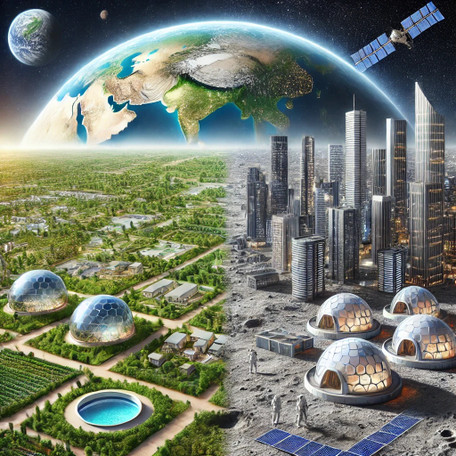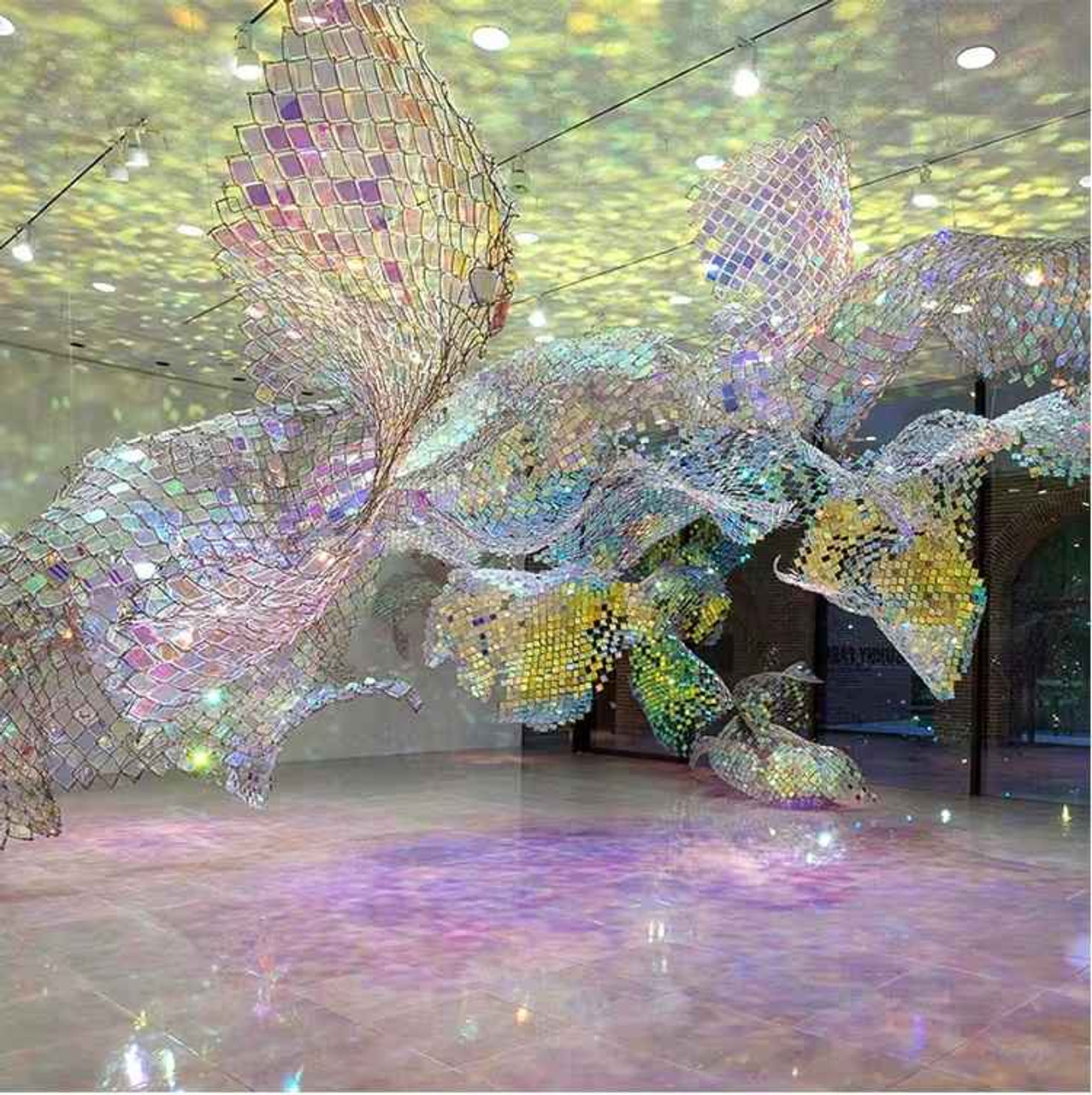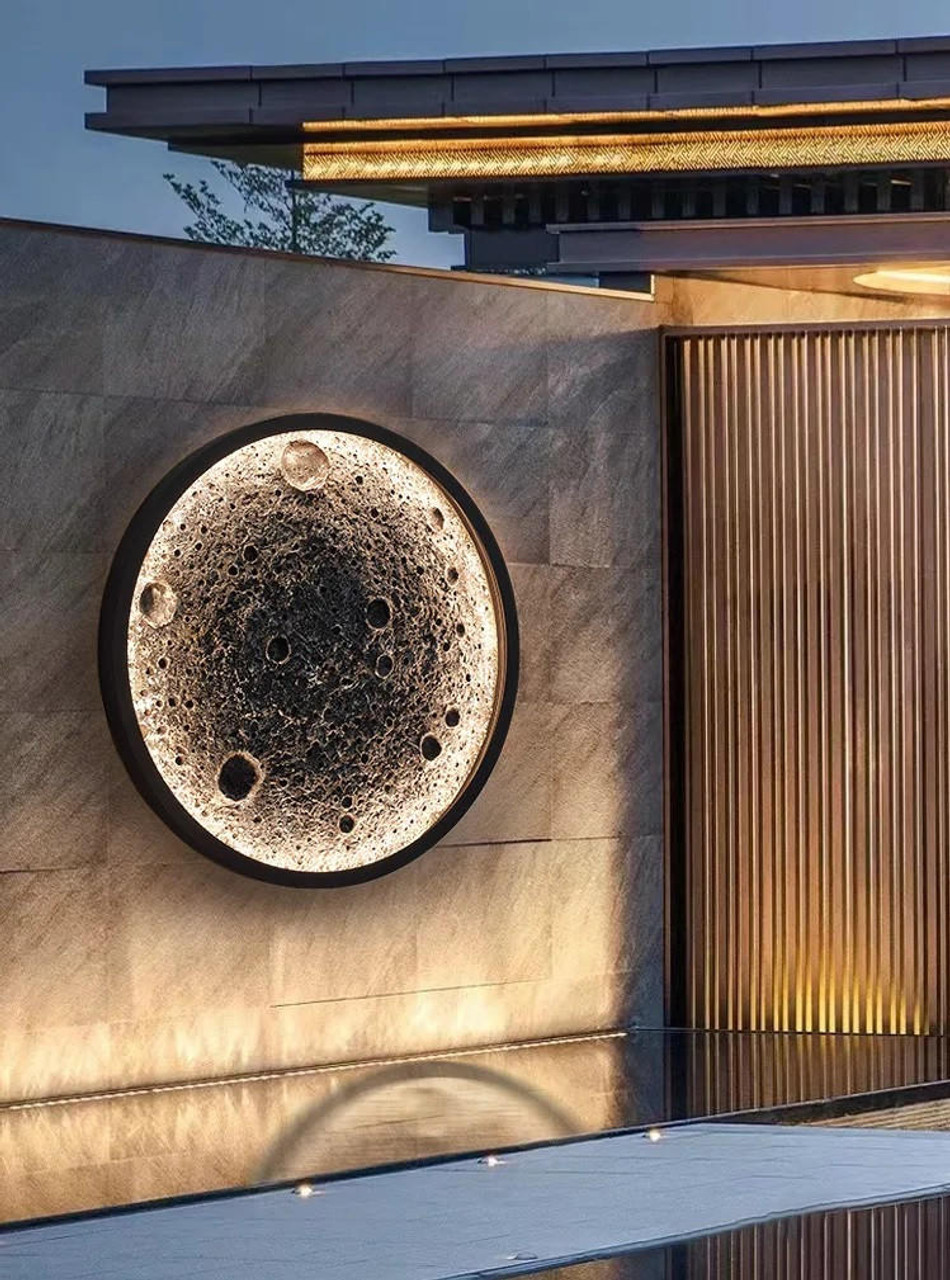Creating for Dual Realms: The Impact of Space Exploration on the Future of Architecture on Earth
Posted by Dr Martin Graythwaite - Architecture PhD / MPhil on Sep 04, 2024
In 1961, when President John F. Kennedy announced America's commitment to landing a man on the moon by the end of the decade, he did more than ignite a race between nations—he unleashed a torrent of imagination. Space was no longer the ethereal backdrop for dreams and fiction; it became a destination, a place humanity could reach. But with that realization, an even deeper set of questions emerged: What would it mean for human life to exist in such a hostile, alien environment? What kind of structures could we build there? And, more provocatively, how might the answers to these questions reshape the way we build and live on Earth?
The truth is, space exploration is not just about conquering the stars—it’s about rethinking our most fundamental assumptions. At its core, architecture is about survival and comfort, about making environments habitable. As we stretch our ambitions to Mars, to the moon, and beyond, we are being forced to reimagine the principles of design and construction in ways that may transform not only life in space but also life here at home.
The Roots of Architectural Innovation
Architecture has always been a response to environmental constraints. Thousands of years ago, the nomadic Bedouins of the Middle East invented tents capable of withstanding harsh desert conditions, with their ingenious use of camel hair and natural ventilation. Centuries later, the medieval castles of Europe reflected the need for both defense and domesticity, with their thick walls and strategically placed towers. Each innovation was born out of necessity—a direct response to the forces of nature, economy, and human need.
Space architecture, however, presents an entirely new challenge. It’s not just about dealing with heat, cold, or rain—it’s about creating viable living spaces in environments where there is no atmosphere, gravity is weak or nonexistent, and the temperature extremes are unimaginably severe. These conditions have forced architects and engineers to push the boundaries of design and material science in unprecedented ways.
Take the example of the International Space Station (ISS), a feat of human ingenuity and the most advanced habitat ever built off-Earth. The ISS is designed to accommodate astronauts for extended periods, allowing them to live and work in the vacuum of space. It’s not a grand cathedral or a skyscraper towering above a city skyline, but it represents a radical departure from traditional architecture nonetheless. Every detail—every nut, bolt, and panel—has been meticulously engineered for efficiency and survivability.
At its core, the ISS is a series of interlocking modules, each one designed for a specific function, whether it's scientific research, exercise, or sleeping quarters. The materials used in its construction—primarily lightweight metals like aluminum—were chosen for their strength-to-weight ratio and resistance to extreme conditions. And yet, perhaps the most impressive aspect of the ISS isn’t what it looks like or how it functions, but what it represents: a blueprint for how we might live in environments fundamentally hostile to human life.
This is where the magic of space exploration begins to ripple back into the architecture of Earth.
Lessons From Space: Efficiency and Resourcefulness
One of the immediate lessons architects are learning from space design is the importance of efficiency. On the ISS, space is at a premium. Every inch must serve a purpose, every object must have a function. In many ways, this mirrors the growing challenges of urban architecture here on Earth, where space in major cities is increasingly scarce and expensive.
Take the rise of micro-apartments and tiny homes—small, highly efficient living spaces designed to maximize utility. These dwellings are not so different from the compact living quarters of the ISS. In both cases, the emphasis is on multifunctionality and minimalism. Walls double as storage, beds fold into the wall, and furniture is often modular, capable of being reconfigured based on need. It’s a philosophy that space exploration has refined and that modern urban design is beginning to embrace.
Yet, it goes deeper than just efficient use of space. Living in space has also forced architects to reconsider the fundamental principles of construction. On Earth, gravity dictates much of how we build—our structures rely on weight and balance to remain upright. In space, without gravity, this rule no longer applies. The absence of gravitational pull opens up possibilities for entirely new forms and methods of construction. Structures can be lighter, more flexible, and even mobile.
In fact, several innovative architectural firms are already exploring how lessons learned from designing for space can be applied to urban centers here on Earth. For example, Foster + Partners, one of the world’s leading architectural firms, has proposed using 3D printing technologies, initially developed for building habitats on Mars, to construct homes and buildings in environmentally sensitive areas on Earth. By utilizing local materials—much like the way lunar or Martian soil could be used to build space habitats—these homes would reduce the environmental impact of construction and offer a sustainable solution to housing in remote or resource-constrained regions.
Sustainability in Space and on Earth
One of the most striking areas of overlap between space architecture and Earth-based architecture is the growing emphasis on sustainability. When you're living in space, resources are limited. Water, air, and energy must be carefully managed and recycled. The same principles are beginning to take root in the design of buildings on Earth.
The quest to create self-sustaining habitats in space has accelerated research into closed-loop systems—environments where nothing is wasted, and everything is reused. NASA’s efforts to develop life support systems for long-duration missions, including the recycling of water and air, have led to significant advances in waste management and sustainable technology. These innovations are now being adapted to urban environments, where sustainability is no longer a choice but a necessity.
Consider the rise of green buildings—structures designed to minimize their environmental footprint through energy efficiency, water conservation, and the use of sustainable materials. Many of the technologies being implemented in green buildings, such as solar panels, rainwater collection systems, and greywater recycling, have their origins in space research. The innovations developed for space missions—where every drop of water and every watt of energy counts—are being repurposed to make life on Earth more sustainable.
One project that exemplifies this trend is the Eden Project in the UK, a series of massive biomes that house a variety of ecosystems, from tropical rainforests to Mediterranean environments. The biomes are a feat of architectural and environmental engineering, using minimal energy to maintain optimal growing conditions. The design principles behind the Eden Project draw heavily on space habitat research, with its focus on creating closed-loop ecosystems and efficient use of resources. It’s a clear example of how the pursuit of space exploration is driving innovation in environmental architecture here on Earth.
The Future of Space Architecture: Bold Visions
As our ambitions for space exploration continue to grow, so too does the field of space architecture. NASA, in collaboration with private companies like SpaceX and Blue Origin, is already planning missions to Mars and the moon, with the goal of establishing permanent human settlements. These missions will require a new generation of habitats capable of supporting life for extended periods—structures that can withstand the harsh conditions of space while providing comfort and security for their inhabitants.
One of the most exciting developments in space architecture is the use of autonomous 3D printing technologies to construct habitats on other planets. The idea is simple but revolutionary: instead of transporting building materials from Earth, we would use the local materials available on the moon or Mars—such as lunar regolith or Martian soil—to construct shelters. This not only reduces the cost of space missions but also opens up new possibilities for sustainable architecture on Earth.
For example, in 2019, NASA launched a design competition called the "3D-Printed Habitat Challenge," inviting architects and engineers to submit designs for habitats that could be built using Martian materials. The winning designs were not just functional—they were beautiful, organic structures that seemed to grow out of the Martian landscape. These designs offer a glimpse into the future of architecture, where buildings are not just static, but dynamic, adaptable, and sustainable.
This concept of adaptability is another key lesson from space exploration that is being applied to Earth-based architecture. As climate change accelerates, architects are increasingly being asked to design buildings that can withstand extreme weather conditions, from hurricanes to floods. The ability to create flexible, resilient structures—buildings that can "live" and adapt to their environment—is a direct outgrowth of space architecture research.
Earth and Space: A Symbiotic Relationship
As we look to the stars, it’s easy to think of space exploration and architecture as something separate from the challenges we face here on Earth. But the truth is, the two are deeply intertwined. The lessons we learn from designing for the hostile environments of space are directly applicable to the challenges of designing for a rapidly changing Earth. From the efficient use of space and resources to the development of sustainable, resilient structures, space architecture is shaping the future of how we live on this planet.
In many ways, space exploration is a test bed for the architectural innovations that will define the next century. As we continue to push the boundaries of human habitation—whether it's on Mars or in the heart of a bustling metropolis—we are learning that the principles of good design are universal. Whether in the vacuum of space or the crowded cities of Earth, architecture must serve one fundamental purpose: to make life possible.
And as we design for two worlds, we are discovering that the best solutions are the ones that allow us to thrive in both.
Conclusion: A New Frontier for Human Ingenuity
The journey from Earth to space and back again has always been one of profound transformation. From the first astronauts who looked back at our fragile planet from the moon, to the architects now envisioning cities in space, our view of what is possible has forever changed. Architecture, too, is at the heart of this transformation. The designs born from space exploration are not just blueprints for extraterrestrial survival; they are pathways to a more sustainable, efficient, and resilient future on Earth.
In the end, space architecture may teach us a simple truth: that the way we build reflects the way we see ourselves. In designing for two realms, we are not just creating for the stars—we are building the future of humanity. And as we reach for the heavens, we are, in fact, coming home.





